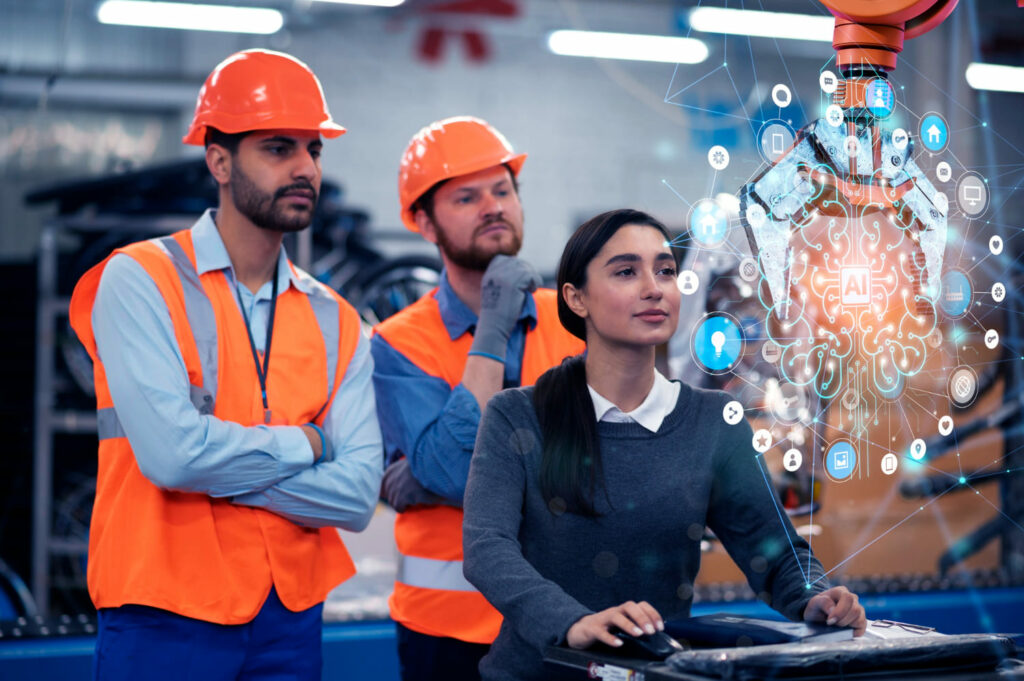The manufacturing sector stands at a pivotal juncture in 2024, as it embraces a wave of transformative changes propelled by innovation, sustainability, and strategic evolution. This industry, historically known for its significant contributions to global economic growth, is now navigating through a landscape marked by technological advancements, environmental imperatives, and shifting market dynamics. According to the World Economic Forum, manufacturing accounts for approximately 16% of global GDP and employs over 35% of the global workforce, highlighting its critical role in the world economy. However, the sector also faces challenges, including resource depletion, environmental degradation, and the need for increased productivity and innovation to meet changing consumer demands.
In response, the manufacturing industry is undergoing a profound transformation, leveraging cutting-edge technologies and adopting sustainable practices to secure its future and contribute positively to the global economy. The United Nations Industrial Development Organization (UNIDO) emphasizes the importance of sustainable industrial development as a key driver for economic growth, environmental sustainability, and social inclusion.
As we delve deeper into the specifics of this transformation in 2024, it becomes clear that the future of manufacturing is not just about technological advancements but also about rethinking strategies and processes to create a more resilient, sustainable, and customer-centric industry. This article explores the innovations at the heart of this transformation, the push toward sustainability, and the strategic shifts shaping the new landscape of manufacturing. Through a detailed examination of these areas, we aim to provide a comprehensive overview of the future of manufacturing in 2024, highlighting the opportunities and challenges that lie ahead.
Innovations Driving Manufacturing
Digital Twin Technology
Digital twin technology stands at the forefront of manufacturing innovation. It involves creating a digital replica of a physical manufacturing process, product, or system. This technology enables manufacturers to simulate, predict, and control systems remotely, reducing downtime and optimizing production processes. In 2024, digital twins are increasingly integrated with AI to predict equipment failures before they occur, drastically reducing maintenance costs and improving production efficiency.
Additive Manufacturing
Additive manufacturing, or 3D printing, has transcended its initial prototyping applications to become a core manufacturing technology. It allows for the production of complex and lightweight designs that are not feasible with traditional manufacturing methods. In 2024, the focus is on improving material properties, reducing costs, and scaling up production capabilities. This innovation is particularly transformative in industries such as aerospace, automotive, and healthcare.
Robotics and Automation
The integration of robotics and automation within manufacturing processes continues to evolve, with robots becoming more intelligent, flexible, and capable of working alongside humans. Cobots (collaborative robots) are designed to work in conjunction with human workers, enhancing productivity and safety. Advanced robotics equipped with AI and machine learning algorithms are capable of performing complex tasks, from precision assembly to quality control, driving efficiency, and reducing human error.
Sustainability in Manufacturing
Circular Economy Practices
Manufacturing is increasingly adopting circular economy principles, focusing on the reuse, recycling, and remanufacturing of products and materials. This shift not only addresses environmental concerns but also offers economic benefits by reducing waste and the demand for raw materials. Manufacturers are innovating in design for disassembly, enabling products to be easily broken down and reused at the end of their life cycle.
Renewable Energy Integration
The push towards sustainability has accelerated the adoption of renewable energy sources within the manufacturing sector. Solar, wind, and bioenergy are being integrated into manufacturing facilities to reduce carbon footprints and mitigate the impacts of climate change. The use of renewable energy is also becoming a factor in location decisions for new manufacturing plants, with access to clean energy sources being a competitive advantage.
Strategic Evolution
Supply Chain Resilience
The global disruptions experienced in recent years have underscored the importance of supply chain resilience. Manufacturers are reevaluating their supply chains, and implementing strategies such as diversification of supply sources, increased inventory levels, and the development of regional supply chains. Digital technologies play a key role in enhancing visibility and agility within the supply chain, enabling manufacturers to respond more effectively to disruptions.
Focus on Customer-Centricity
The future of manufacturing is not just about technology and sustainability but also about placing a greater emphasis on customer needs. Manufacturers are leveraging data analytics and IoT technologies to gain insights into customer behavior and preferences. This data-driven approach allows for more personalized products and services, enhancing customer satisfaction and loyalty.
Skilling and Workforce Development
As manufacturing technologies evolve, so does the need for a skilled workforce capable of operating and maintaining these systems. Manufacturers are investing in training and development programs to equip their workforce with the necessary skills. There is also a growing emphasis on STEM education and partnerships with educational institutions to prepare the next generation of manufacturing professionals.
Conclusion
The future of manufacturing in 2024 is characterized by a blend of innovation, sustainability, and strategic evolution. By embracing digital technologies, focusing on environmental responsibility, and adapting to changing market demands, manufacturers can position themselves for success in a rapidly evolving global landscape. The industry’s ability to innovate and adapt will not only shape its own future but also have a profound impact on the global economy and environment.










